Vermont’s trained leashed dogs help recover wounded game
| Published: 12-16-2023 2:25 AM |
CORINTH — What a .308-caliber rifle started during Vermont’s deer hunting season, a dog’s nose was called upon to finish.
Last month, Corinth hunter Ron Pierce shot — but didn’t immediately drop — a 130-pound buck that then disappeared out of sight. He summoned Daisy, a 5-year-old bloodhound. Her handler, Newbury, Vt., resident Riley Harness, is one of around 50 leashed dog trackers permitted in Vermont.
Since 1996, when the practice was legalized, hunters who shoot but lose track of big game — deer, bear, moose, wild turkey — can ring up a leashed dog tracker from a list supplied by the Vermont Fish & Wildlife Department.
When Harness hears from a hunter who needs his help, he must get permission from a game warden or Vermont State Police before heading out on a track. Then, he and Daisy climb in his truck.
“That’s how it starts,” Harness said.
The rest is up to the dog.
“We just follow her nose and hope she knows what she’s doing,” he said.
Leashed dog tracking is meant to ensure that the life of an animal that has been shot by a hunter ends as humanely as possible and to keep wild meat in freezers and away from Vermont’s abundant coyote population.
Article continues after...
Yesterday's Most Read Articles
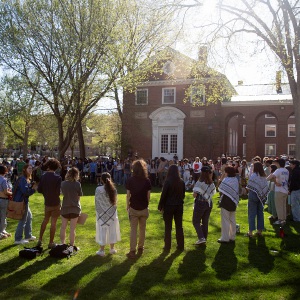 Dartmouth administration faces fierce criticism over protest arrests
Dartmouth administration faces fierce criticism over protest arrests
 Three vie for two Hanover Selectboard seats
Three vie for two Hanover Selectboard seats
 A Look Back: Upper Valley dining scene changes with the times
A Look Back: Upper Valley dining scene changes with the times
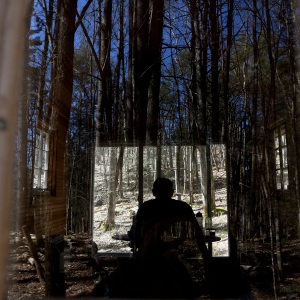 Norwich author and educator sees schools as a reflection of communities
Norwich author and educator sees schools as a reflection of communities
“Coyotes will eat the best meat,” Harness said. “And not many people want to eat a deer that was half eaten by coyotes.”
Hunters can lose the trail of an animal because rain or snow washed blood away, an animal died in a spot hidden from view or a less-than-perfect shot left it alive and mobile but wounded.
The trackers themselves carry guns for this reason. When they find the deer, the trackers can “dispatch” it Harness said. (That’s the word used for “kill” in the state law).
Daisy led Harness and Pierce on 1½-hour trek. But after the dog pulled the men through waist-high brush and — almost — a swamp, time constraints forced the group to call it a day earlier than they would have liked and with no recovered game in tow.
The services of a leashed dog tracker are free. Donations, however, are gladly accepted. They help cover the cost of gas and account for some of his time, Harness said.
“Traveling an hour and a half each way, and then spending an hour or two on tracking, you can be gone until two or three o’clock in the morning,” he said.
Harness has noticed a culture shift in attitudes toward tracking.
“Vermont has a lot of pride,” he said. “Normally, hunters don’t like to say, ‘I can’t find find it.’ ”
Then people see, or hear from others, how good the dogs are. Leashed tracking dogs are able to recover game about a third of the time, Harness said. But taking the chance can be the difference between a freezer stocked with venison and bare shelves.
“We found a big buck after four inches of snow,” he said. “Those stories get out there, and people realize what we’re up to.”
Col. Justin Stedman, director of Fish & Wildlife’s warden service, chalks the change up to a new generation of hunters and a bump in licenses sold during the COVID-19 pandemic.
“I think we have a more conscientious set of hunters,” Stedman said. “They value the individual animal, utilize every resource to be able to find it.”
He’s not trying to “disparage” older generations, he said, but he noted “more of a value in ensuring that the animal isn’t wasted than maybe there used to be.”
Daisy was 10 months old when both she and Harness started training with Tim Nichols, of Granville, N.Y.
“He’s the one that keeps all of us trackers in line,” Harness said.
Nichols, originally from Manchester, Vt., led the decade-long fight to get the practice of leashed dog tracking legalized in his home state. Opponents feared that the practice would lead to violent dogs tormenting already pained big game.
But trackers point to the fact that the dogs are required to be hooked into at least a 12-foot lead rope and that it’s meant to ultimately ease an animal’s agony.
Even people usually opposed to hunting were for legalizing leashed dog tracking, said Nichols. “They said, ‘At least you’re doing the right thing, trying to get to the deer and put it out of its misery in the most humane way.’ ”
Since then-Gov. Howard Dean, a Democrat, signed the practice into law, Nichols has had it hanging up on his wall at home. Now, he’s moved his de facto lobbying to Massachusetts.
And he still makes time for tracking. As of Wednesday, Nichols’ dog Zeke — a Black Forest Hound, more commonly known as a “kopov,” a breed prized by trackers for its keen nose — had already pulled him along on 108 tracks this season. Zeke’s “recovered” 38 deer and three bears.
When his dog is “on” a scent, there are a few different things he’s chasing, Nichols said.
The dog tracks the blood as well as the bullet wound that blood comes from.
“Every time the deer breathes, it’s like when you walk out on a cold morning,” Nichols said. “Fog comes out of the hole along with a bunch of blood particles.”
“That’ll stick to trees. We can’t see it, of course, but a dog can smell that.”
Dogs also follow the unique scent gland that deer have between their hooves.
“Every person has a different smell,” Nichols said. “So do deer.”
Nichols puts both dog and owner through their paces before he recommends that they’re permitted by the state.
Every Sunday from April through June, Nichols lays blood trails leading to deer hides that he scatters around a shuttered airport in Fair Haven, Vt. for amateur dogs to practice on.
All this after Nichols’ pupils have passed a 50-question written test and read the 350-page “Tracking Dogs for Finding Wounded Deer,” by John Jeanneney, the godfather of dog tracking in New England, who brought the practice to the region from Germany in the 1960s.
By Sept. 1, dogs under Nichols’ tutelage are expected to follow a blood trail 24 hours after Nichols has trailed it 1,000 yards, making four 90-degree turns along the way.
“That’s when I put that dog on it,” he said. “If he can find that hide then, he’s ready to rock ’n’ roll.”
“Then you better hang on,” Nichols said. “ ’Cause you’ve got a dog that can really do something.”
Daisy, after all, was right. Pierce’s buck, ultimately recovered by the hunter himself, was just 50 feet from where the dog had led them.
Frances Mize is a Report for America corps member. She can be reached at fmize@vnews.com or 603-727-3242.

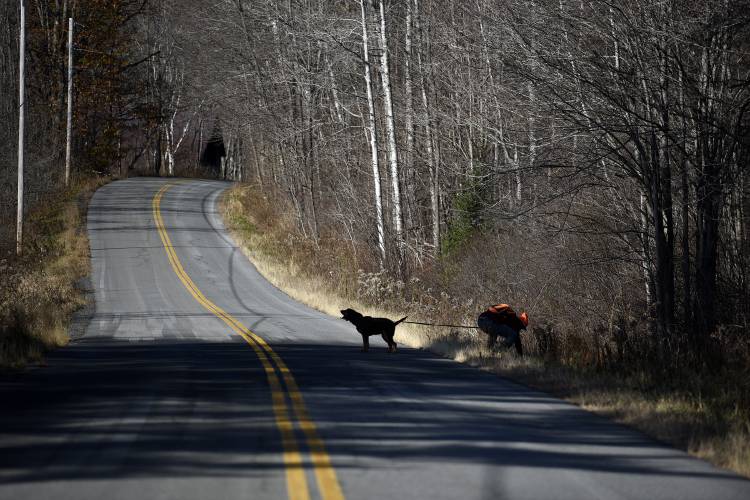
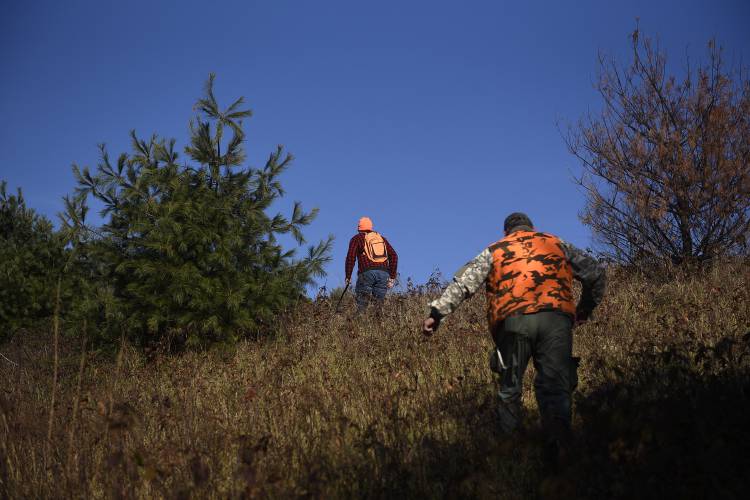
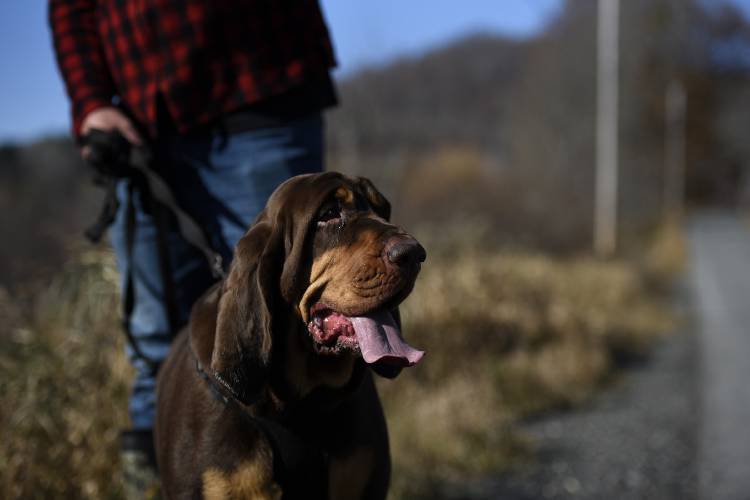
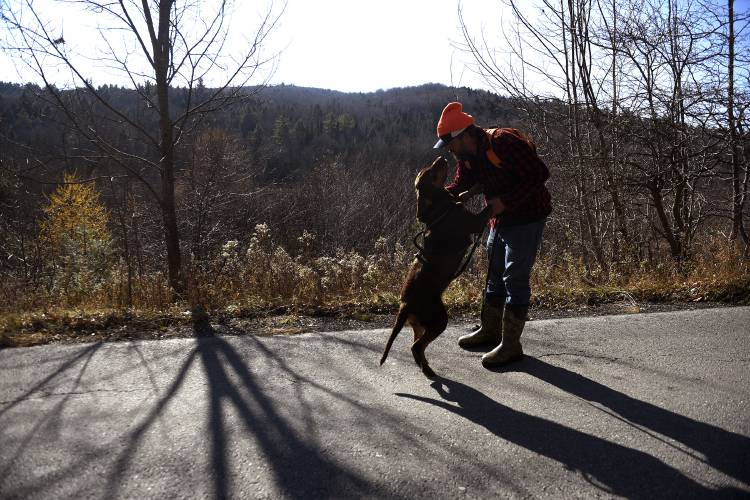
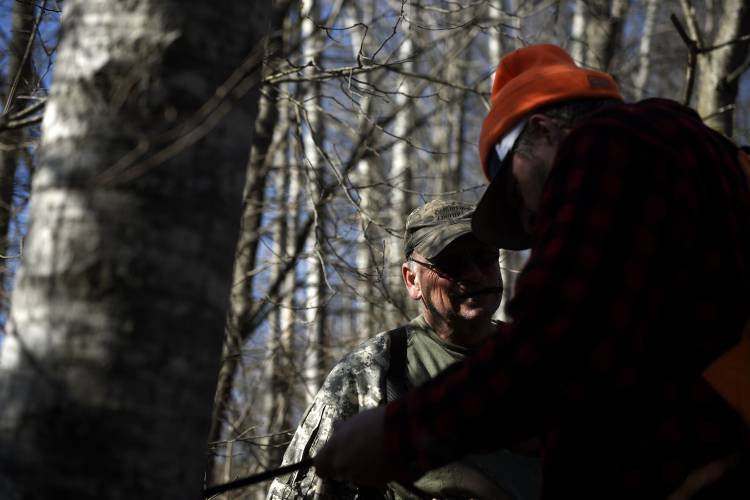
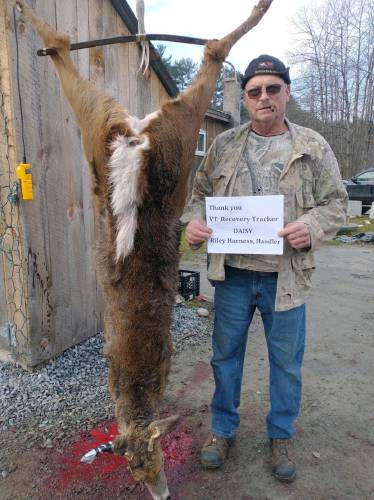
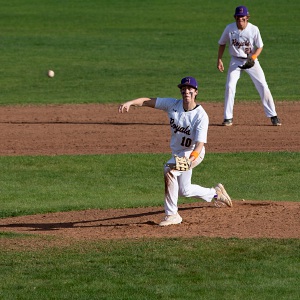 Local Roundup: Hartford tops Woodstock in close girls lacrosse contest
Local Roundup: Hartford tops Woodstock in close girls lacrosse contest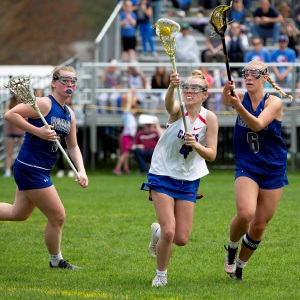 Hurricanes earn 10-9 victory over U-32 in girls lacrosse
Hurricanes earn 10-9 victory over U-32 in girls lacrosse Stevens, Newport baseball split high-scoring games
Stevens, Newport baseball split high-scoring games Lebanon High senior comes to the aid of driver with health problem
Lebanon High senior comes to the aid of driver with health problem
